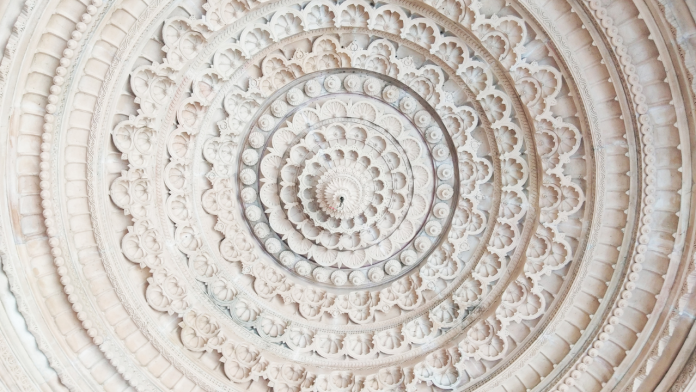Explore the Beauty and Spirituality of Jain Architecture in India. Discover the Unique Features and Significance of Jain Temples. Dive into the World of Jain Architecture Today!
The Roots of Jainism in India
Jainism traces its origins to ancient India, and its teachings have significantly shaped the architectural landscape of the country. The religion’s founding principles revolve around non-violence, truth, and self-discipline, which are reflected in the Jain architectural marvels scattered across the Indian subcontinent.
Key Principles of Jain Architecture
Jain architecture embodies the core principles of the faith. It emphasizes simplicity, non-violence, and detachment from worldly desires. This is evident in the use of white marble, minimalistic designs, and a dedication to preserving nature in their constructions.
The Influence of Religion on Jain Architectural Styles
Jain architecture is deeply intertwined with religion, resulting in unique styles that are distinct from other architectural traditions in India. The influence of Jainism can be observed in temple layouts, sculptures, and the use of symbols like the Swastika and Om.
Types of Jain Temples and Their Significance
Jain temples come in various forms, with Digambar and Shwetambar Jains following different architectural conventions. Some of the most notable temple types include derasar, tirtha, and ghar derasar, each serving specific religious and spiritual purposes.
Architectural Elements in Jain Temples
Jain temples feature an array of architectural elements, including intricate carvings, ornate pillars, and domes. These elements showcase the craftsmanship and dedication that go into creating these sacred structures.
Iconography and Symbolism in Jain Architecture
Jain architecture is rich in symbolism. Statues of Tirthankaras, celestial beings, and other religious symbols are prevalent in Jain temples, conveying the faith’s intricate cosmology and spiritual teachings.
Prominent Jain Temples in India
India boasts a plethora of remarkable Jain temples, such as the Dilwara Temples in Mount Abu, Ranakpur Temple, and the Shravanabelagola Temple. These temples are not only architectural wonders but also centers of spiritual enlightenment.
Jain Architecture Beyond Temples
The influence of Jain architecture extends beyond temples. It can be seen in the construction of step wells, palaces, and forts in regions where Jainism flourished.
Preservation and Conservation Efforts
Preservation and conservation efforts are crucial in maintaining the grandeur of Jain temples and other architectural marvels. These efforts aim to protect and restore the delicate carvings and historical significance of these sites.
Contemporary Influences on Jain Architecture
Modern architects and designers continue to draw inspiration from Jain architecture, infusing elements of the style into contemporary buildings and designs.
The Artistic and Aesthetic Aspects
The artistry in Jain architecture is unparalleled. The delicate stone carvings, intricate patterns, and meticulous attention to detail make Jain temples an exquisite fusion of art and architecture.
The Role of Jain Architecture in Indian Culture
It has played a pivotal role in shaping Indian culture, influencing not only religious practices but also the nation’s aesthetic and architectural identity.
A Glimpse into the Future
The legacy of these architecture continues to thrive, with ongoing construction projects and restoration efforts ensuring that this architectural heritage remains a source of inspiration for generations to come.
Conclusion: The Enduring Legacy of Jain Architecture in India
In conclusion, Jain architecture in India is a testament to the deep-rooted spiritual and artistic traditions of this ancient religion. Its enduring legacy enriches the nation’s cultural heritage and stands as a symbol of the timeless beauty and spirituality that Jainism embodies.
FAQs
1. What are the core principles of Jain architecture?
It is built upon the principles of simplicity, non-violence, and detachment from worldly desires, reflecting the core tenets of Jainism.
2. Can non-Jains visit Jain temples in India?
Yes, Jain temples in India are open to visitors of all backgrounds, allowing everyone to admire their architectural splendor and learn about Jainism.
3. Are there any restrictions for visitors in Jain temples?
Visitors are expected to maintain a respectful and quiet demeanor within Jain temples. It is customary to remove shoes and dress modestly when entering these sacred spaces.
4. How do Jain architectural styles differ from other Indian architectural traditions?
Jain architecture is distinct due to its emphasis on simplicity, white marble, and unique symbols and iconography that reflect the Jain faith’s teachings.
5. What is the significance of the Swastika in Jain architecture?
The Swastika is a sacred symbol in Jainism, representing well-being and good fortune. It is commonly seen in Jain temples, conveying positive energy and blessings.



